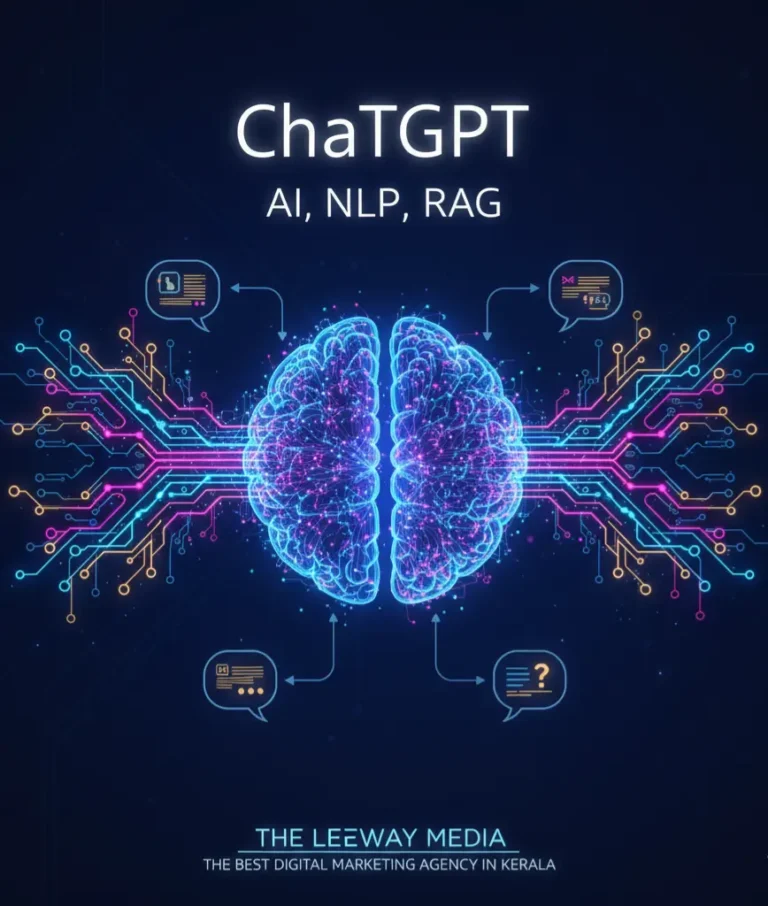
What is ChatGPT?
ChatGPT is a cutting-edge artificial intelligence language model developed by OpenAI. It is intended to understand natural language input and produce human-like, coherent, and contextually relevant text in response. Unlike conventional code that adheres to strict regulations, ChatGPT uses advanced machine learning algorithms, especially the GPT (Generative Pre-trained Transformer) architecture, to assess and determine text patterns.
This enables ChatGPT to engage in interactive, conversational exchanges with users, allowing it to answer questions, provide explanations, make suggestions, generate creative content, summarise information, and assist with a variety of professional, educational, and personal activities. Writing assistance, coding help, teaching, idea generation, language translation, and customer support automation are just a few of its many uses.
ChatGPT is trained on large datasets of text from books, journals, and websites, allowing it to recognize context, nuance, and intent in communication. While it excels at creating educational and innovative suggestions, it does not possess consciousness, emotions, or personal experiences, and its expertise is restricted to the data it was educated on and updates that are available through associated sources.
Essentially, ChatGPT is a highly intelligent virtual assistant that can comprehend intricate questions and provide human-like solutions, making it an effective tool for productivity, creativity, and learning.
What is GPT?
GPT (Generative Pre-trained Transformer) is an advanced artificial intelligence language model created by OpenAI that can generate text in a natural, human-like manner. The word “generative” emphasizes its capacity to produce unique material rather than merely analyzing preexisting language. “Pre-trained” means that the model has already learnt patterns, syntax, facts, and contextual relationships from a large amount of textual data before being fine-tuned for a specific application. The “Transformer” architecture it employs allows GPT to comprehend the context and links between words, even throughout long sentences and complex paragraphs, allowing it to generate logical and contextually accurate responses.
Uses of ChatGPT
ChatGPT’s ability to understand and generate human-like writing makes it useful in a variety of settings, including personal, professional, and instructional. Here is a thorough overview:
- Content Creation
- Writing blogs, articles, or social media posts
- Crafting advertisements, taglines, or marketing copy
- Generating creative stories, poems, or scripts
- Education & Learning
- Tutoring in subjects like math, science, or language
- Explaining complex concepts in simple terms
- Assisting with homework, research, and exam preparation
- Language learning and translation
- Professional & Business Support
- Drafting emails, reports, and business documents
- Generating proposals, presentations, and meeting notes
- Automating customer support with chatbot responses
- Brainstorming ideas for business strategies or campaigns
- Programming & Technical Assistance
- Writing and debugging code
- Explaining programming concepts
- Providing solutions to technical problems
- Creating scripts or automation tasks
- Personal Productivity
- Planning schedules, to-do lists, and reminders
- Offering lifestyle advice (e.g., fitness, diet, mental wellness)
- Summarizing long texts, articles, or documents
- Generating creative ideas for hobbies or projects
- Entertainment & Creativity
- Brainstorming ideas for games, apps, or creative projects
How ChatGPT Work
ChatGPT uses artificial intelligence to comprehend the language you type and provide an appropriate, human-like answer. It does not “think” like a person, but it has been trained to recognize linguistic patterns and forecast what words or thoughts will come next.
Step-by-Step Process
- Training on Text Data
- ChatGPT is trained using vast volumes of text from websites, books, and journals.
- During training, it acquires grammar, vocabulary, facts, tone, and context.
- This procedure aids in understanding how individuals communicate organically.
- Understanding the Input
- ChatGPT divides your sentence into smaller units known as tokens (words or word fragments) as you type.
- It examines these tokens to determine context, meaning, and intent.
- It can tell if you’re asking a question, giving an order, or striking up a conversation, for instance.
- Generating a Response
- Using a neural network called a Transformer, ChatGPT determines the most likely next word in a sentence, one token at a time, based on all the text it has seen before.
- It quickly repeats this procedure to create whole, cohesive sentences.
- The outcome is a spontaneous, naturally occurring response that is suited for the context.
- Refinement & Safety
ChatGPT’s responses are refined using reinforcement learning and human feedback to make them:
- More accurate and relevant
- Safer and aligned with ethical guidelines
- Better at following instructions
What is RAG (Retrieval-Augmented Generation)
RAG (Retrieval-Augmented Generation) is an advanced AI method that creates more fact-based, accurate, and current responses by fusing text generation and information retrieval. It makes it possible for big language models, like GPT, to consult outside knowledge sources when producing text, like as databases, documents, or the internet.
RAG enables the model to access pertinent, real-world data and produce responses based on actual data, rather than only the knowledge acquired during training. This method closes the gap between stored information and up-to-date, factual content while improving the model’s accuracy, dependability, and relevance.
How RAG Works?
- Retrieval Step: When you ask a question, the system initially searches an external knowledge base (such as a document set or web index) to find the most relevant answers.
- Generation Step: The gathered data is subsequently passed to a language model (such as GPT), which uses it to construct a meaningful, context-aware response.
Benefits of RAG
- Up-to-date information
- Higher factual accuracy
- Better transparency (sources can be cited)
- Adaptable to custom databases (like company documents or academic papers)
What is RLHF
RLHF is an abbreviation for Reinforcement Learning from Human Feedback, which is a strategy for training AI models (such as ChatGPT) to make their responses more helpful, accurate, and consistent with human values. The model learns from human preferences and feedback in addition to text input to enhance the accuracy and security of its responses.
How RLHF Works
- Pre-training: The model (like GPT) is trained on vast amounts of general text (books, papers, and webpages) to understand linguistic patterns.
- Fine-tuning with Human Feedback: After reviewing several model responses to the same query, human trainers assign a ranking from best to worst. This aids the AI in determining what constitutes a factual, polite, and useful response.
- Reinforcement Learning: Using these rankings, the model gains experience with a reward system—responses that comply with human desires get rewarded, while poor or incorrect ones are eliminated. This trains the algorithm to generate responses that are more in line with human expectations over time.
Why RLHF Matters
- Makes AI safer and more ethical
- Improves relevance and clarity of responses
- Reduces biased or harmful outputs
- Helps align AI behavior with human intent
How ChatGPT & RAG Related?
ChatGPT is a big language model created by OpenAI that generates human-like writing using patterns acquired during training. However, ChatGPT’s understanding is restricted to what it was trained on; it does not automatically learn new or updated information once its training period ends.
This is where RAG (Retrieval-Augmented Generation) comes in. RAG expands ChatGPT’s capabilities by providing access to external, real-time knowledge sources (such as databases, documents, and the internet). Here’s how they work together:
- ChatGPT (Base Model): Uses its prior knowledge to generate words and comprehend context.
- RAG Layer (Add-on): Obtains current and pertinent information from outside sources prior to ChatGPT producing an answer.
- Combined Output: ChatGPT then uses the acquired data to provide correct, factual, and current responses, combining its conversational abilities with real-world information.
Role of NLP
Natural Language Processing (NLP) is an area of artificial intelligence (AI) that allows computers to read, interpret, and synthesize human language in a meaningful and usable manner.
It bridges the gap between human communication and computer comprehension, enabling machines to analyze text or speech in the same way that humans do.
- Understanding Human Language: NLP aids computers in comprehending human language’s grammar, phrase construction, meaning, and context.
- Text Processing and Analysis: NLP enables computers to process vast amounts of text by examining intent, attitudes, and keywords. Used in:
- Sentiment analysis (positive/negative tone)
- Text summarization
- Spam detection
- Language Translation: NLP supports translation programs such as Google Translate, allowing for accurate translation from one language to another while keeping meaning.
- Speech Recognition & Voice Assistants: Voice-enabled systems such as Siri, Alexa, and Google Assistant use this technology to recognize and respond to spoken commands.
- Chatbots & Conversational AI: NLP gives chatbots (like ChatGPT) the ability to comprehend user input and produce organic, context-aware responses, which humanizes digital conversation.
- Information Retrieval: NLP helps search engines and AI systems identify relevant material from vast databases or the internet, enhancing accuracy and relevance.
- Text Generation: It makes it possible for AI models to produce writing that is human-like, including articles, summaries, code, and creative content.
Limitations of ChatGPT
- Lack of Real-Time Knowledge: ChatGPT’s basic model lacks access to live or real-time data. Its knowledge is restricted to what it was trained on (up to the latest update); therefore, it may be unaware of recent events or new developments unless it is connected to external tools such as RAG or web search.
- No True Understanding: In reality, ChatGPT does not comprehend text in the same manner that people do. It predicts the most likely words based on patterns in data, so while its responses sound sophisticated, they’re not based on true comprehension or thinking.
- Possibility of Inaccurate or Misleading Information: Occasionally, ChatGPT generates “hallucinations,” or confident but inaccurate responses. It might also provide out-of-date information or confuse facts.
- Limited Personalization: Unless particularly intended for memory or fine-tuning, ChatGPT cannot remember long-term user preferences or context across multiple chats.
- No Emotions or Human Judgment: ChatGPT can mimic tone or empathy, but it cannot feel emotions or form moral opinions. When making decisions, it lacks the human capacity to consider subtleties of emotion or ethics.
- Dependence on Input Quality: The accuracy of ChatGPT’s response is significantly influenced by the question’s wording. Poorly stated or ambiguous prompts may result in confused or irrelevant answers.
- Potential Bias in Responses: ChatGPT, which learns from human-generated data, may unintentionally reflect biases in that data.
- Limited Problem-Solving & Critical Thinking: While ChatGPT can imitate reasoning, it does not conduct actual logical deduction or sophisticated analytical reasoning; instead, it is pattern-based rather than insight-oriented.
Final Thoughts
From an experimental AI tool, ChatGPT has quickly developed into a potent assistant that fosters innovation, communication, and productivity in a variety of sectors. With advancements such as multimodal capabilities, improved reasoning through newer model architectures, and seamless app connections, it is now one of the most versatile AI systems in use today.
What’s ahead? OpenAI will continue to improve its models and increase their capabilities, making ChatGPT smarter, faster, and more intuitive with each update. The next big development in AI-assisted productivity is rapidly approaching. At The Leeway Media, the best Digital marketing agency in Kerala, we use ChatGPT to create creative content and design concepts that inspire, engage, and produce outcomes.
